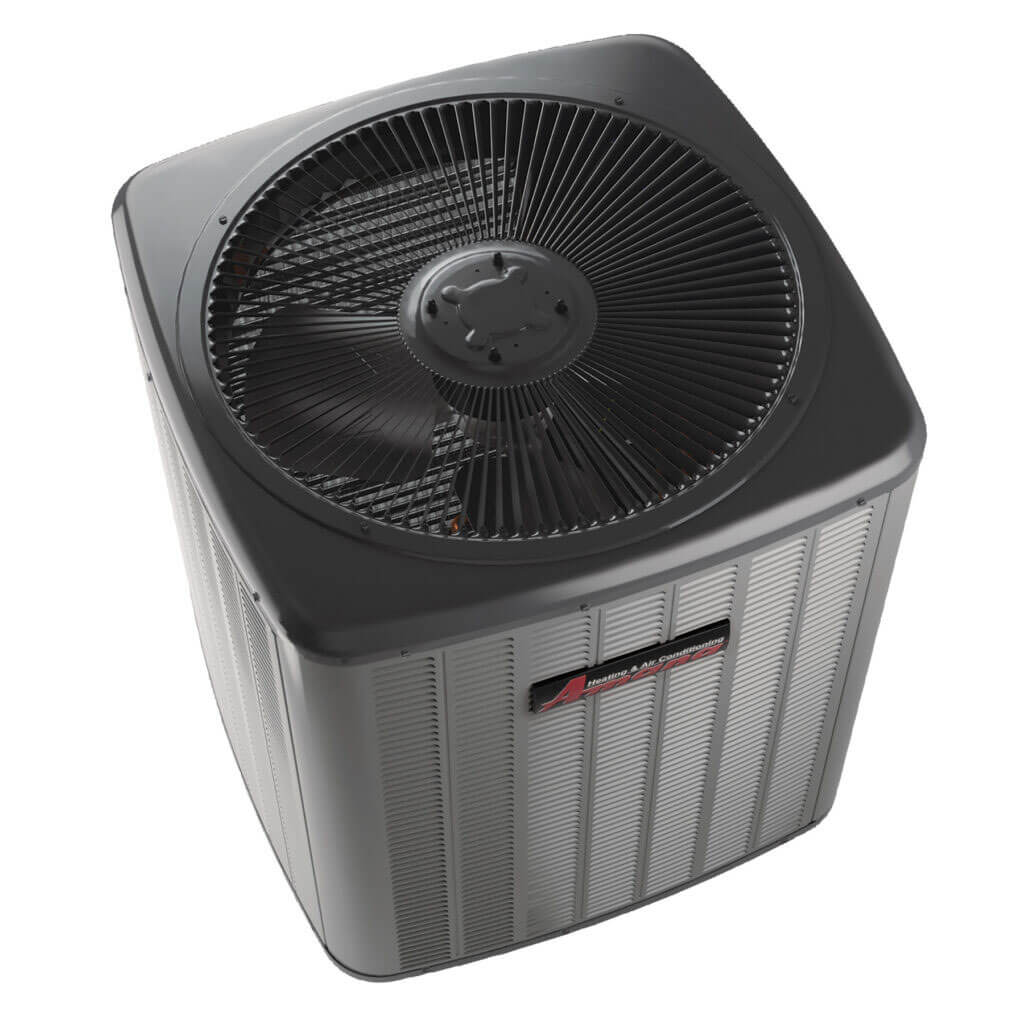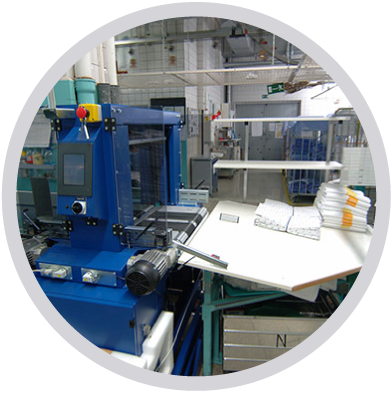Posted on April 17, 2024
Expert Tips for Choosing the Best Air Conditioning in Lafayette, LA

Choosing the right air conditioning system for your home or business in Lafayette, LA, is a crucial decision that can affect your comfort and energy bills for years to come. With so many options available on the market, it can be overwhelming to select the best air conditioning unit that suits your needs. To get more information about air conditioning lafayetta la, you can contact Legacy Coolong & Heating.
1. Determine Your Cooling Needs
Consider the size of your space:
- Calculate the square footage of the area that needs to be cooled.
- Consult with an HVAC professional to determine the appropriate cooling capacity required for your space.
Evaluate your cooling preferences:
- Do you prefer a central air conditioning system or ductless mini-split units?
- Consider additional features such as programmable thermostats, energy-saving modes, and air purifiers.
2. Energy Efficiency Matters
Look for SEER ratings:
- SEER (Seasonal Energy Efficiency Ratio) measures the efficiency of air conditioning units.
- Choose a unit with a higher SEER rating to save on energy costs in the long run.
Consider ENERGY STAR® certification:
- ENERGY STAR® certified air conditioning units are more energy-efficient and environmentally friendly.
- These units meet strict guidelines set by the U.S. Environmental Protection Agency.
3. Quality and Reliability
Research reputable brands:
- Look for well-known brands with a reputation for quality and reliability.
- Read customer reviews and testimonials to gauge the performance of the air conditioning units.
Consider warranty coverage:
- Choose a unit that comes with a comprehensive warranty to protect your investment.
- Ensure the warranty covers parts and labor for a reasonable period.
4. Installation and Maintenance
Hire a professional HVAC contractor:
- Ensure the contractor is licensed, insured, and experienced in installing air conditioning systems.
- Ask for references and verify the contractor's credentials before hiring.
Regular maintenance is key:
- Schedule routine maintenance for your air conditioning unit to ensure optimal performance.
- Clean or replace air filters regularly to improve efficiency and indoor air quality.
5. Cost Considerations
Compare quotes:
- Get multiple quotes from different HVAC companies to compare prices and services offered.
- Avoid choosing the cheapest option without considering the quality of the unit and installation services.
Look for rebates and incentives:
- Check for rebates or incentives offered by manufacturers or local utility companies for purchasing energy-efficient air conditioning units.
- Explore financing options to spread out the cost of installation over time.
By following these expert tips, you can make an informed decision when choosing the best air conditioning system for your home or business in Lafayette, LA. Remember to consider your cooling needs, energy efficiency, quality and reliability, installation and maintenance requirements, and cost considerations to find the perfect air conditioning unit that will keep you cool and comfortable for years to come.
Posted on April 17, 2024
5 Common Misconceptions About Refinancing Home Loans

Image Source: Google
Refinancing a home loan can be a great way to save money, lower your monthly payments, or tap into your home equity. However, there are several misconceptions surrounding the refinancing process that can prevent homeowners from taking advantage of its benefits. To get more information about refinance home loans, you may browse this website.
In this article, we will debunk five common misconceptions about refinancing home loans.
1. Refinancing is only worthwhile if you can lower your interest rate
Reality Check:
- While lowering your interest rate is often a key motivator for refinancing, it is not the only factor to consider.
- If you can reduce your monthly payments, shorten the loan term, or switch from an adjustable-rate mortgage to a fixed-rate mortgage, refinancing can still be beneficial.
- Additionally, refinancing to access your home equity for renovations, debt consolidation, or other financial needs can also be a worthwhile reason to refinance, even if your interest rate remains the same.
2. Refinancing is too expensive
Reality Check:
- While there are costs associated with refinancing, such as closing costs, appraisal fees, and application fees, these expenses can often be offset by the savings you gain from a lower interest rate or reduced monthly payments.
- It's essential to calculate the break-even point to determine how long it will take for the savings from refinancing to cover the costs involved.
- In some cases, lenders may offer no-closing-cost refinance options, where the closing costs are rolled into the loan or covered by a slightly higher interest rate.
3. You need perfect credit to refinance
Reality Check:
- While having good credit can make it easier to qualify for a refinance and secure a lower interest rate, you don't necessarily need perfect credit to refinance your home loan.
- There are refinance options available for borrowers with less-than-perfect credit, such as FHA loans or VA loans, which have more flexible credit requirements.
- Even if your credit score has improved since you initially took out your mortgage, you may be eligible for a better rate through refinancing.
4. Refinancing resets the clock on your mortgage
Reality Check:
- While refinancing does result in a new loan with a new term, it doesn't necessarily mean you have to start over with a 30-year mortgage.
- You can choose a loan term that aligns with your financial goals, whether it's a shorter term to pay off your loan faster or a longer term to lower your monthly payments.
- By refinancing to a shorter term, you can potentially save on interest costs and build equity in your home more quickly.
5. You can only refinance with your current lender
Reality Check:
- While sticking with your current lender for refinancing may seem like the easier option, you are not limited to working with them.
- Shopping around and comparing offers from multiple lenders can help you find the best refinance terms and rates that suit your financial needs.
- Each lender may offer different rates, terms, and fees, so it's essential to explore your options to ensure you are getting the most competitive deal.
By debunking these common misconceptions about refinancing home loans, homeowners can make informed decisions about whether refinancing is the right choice for their financial situation. Whether you are looking to lower your monthly payments, tap into your home equity, or pay off your mortgage faster, refinancing can be a valuable tool to achieve your goals.
Posted on April 17, 2024
Sip, Swirl, Savor: Online Sommelier Courses to Elevate Your Palate
Are you a wine enthusiast looking to deepen your knowledge and appreciation of fine wines? Online sommelier courses offer a convenient and comprehensive way to elevate your palate and become an expert in the world of wine. Whether you are a novice or a seasoned wine connoisseur, these courses can provide you with the skills and expertise needed to confidently navigate the complex and diverse world of wine.
The Benefits of Online Sommelier Courses
Online sommelier courses offer a wide range of benefits for wine enthusiasts looking to enhance their knowledge and tasting skills. Here are some of the key advantages of enrolling in an online sommelier course:
Convenience
- Study at your own pace from the comfort of your home
- Access course materials and lectures anytime, anywhere
- Flexible scheduling to fit your lifestyle
Expert Instruction
- Learn from experienced sommeliers and wine professionals
- Receive personalized feedback and guidance
- Gain insights and tips from industry experts
Comprehensive Curriculum
- Explore the history, production, and regions of wine
- Develop tasting skills and sensory evaluation techniques
- Learn food and wine pairing principles
Certification
- Obtain a sommelier certification upon successful completion of the course
- Enhance your credentials and career opportunities in the wine industry
- Join a network of wine professionals and enthusiasts
What to Expect from Online Sommelier Courses
Online sommelier courses typically cover a wide range of topics to provide students with a comprehensive understanding of wine. Here are some of the key areas that you can expect to explore in an online sommelier course:
Wine Fundamentals
- Introduction to grape varieties, winemaking techniques, and wine regions
- Understanding wine labels, classifications, and terminology
- Exploring the factors that influence wine quality and style
Tasting Techniques
- Developing sensory evaluation skills to assess the appearance, aroma, and taste of wine
- Learning how to identify and describe different flavor profiles and characteristics in wine
- Practicing blind tastings to refine your palate and analytical skills
Food and Wine Pairing
- Understanding the principles of matching food and wine to enhance the dining experience
- Exploring classic pairings and experimenting with unconventional combinations
- Learning how to consider flavor, texture, and acidity in food and wine pairing
Choosing the Right Online Sommelier Course
With the growing popularity of online sommelier courses, it's essential to choose a program that suits your goals and preferences. Here are some factors to consider when selecting an online sommelier course:
Accreditation
- Look for courses offered by reputable institutions or wine organizations
- Check if the course provides a recognized sommelier certification
- Consider the qualifications and industry experience of the instructors
Curriculum
- Review the course syllabus and topics covered to ensure they align with your learning objectives
- Consider the depth and breadth of the curriculum to determine if it meets your expectations
- Look for courses that offer practical hands-on experience and tasting opportunities
Reviews and Testimonials
- Read reviews and testimonials from past students to gauge the quality of the course
- Check for recommendations from industry professionals and wine experts
- Ask for feedback from friends or colleagues who have taken the course
Conclusion
Online sommelier courses offer a convenient and enriching way to deepen your knowledge and appreciation of wine. Whether you are looking to pursue a career in the wine industry or simply enhance your wine tasting skills, these courses provide a comprehensive education that can elevate your palate and open up a world of flavors and aromas. Take the first step towards becoming a wine expert by enrolling in an online sommelier course today!
Posted on April 16, 2024
Step Towards Relief: Choosing the Best Orthotics for Heel Pain

Image Source: Google
Heel pain can be a debilitating condition that affects your daily activities and quality of life. One of the most effective ways to alleviate heel pain is by using orthotic inserts in your shoes. With so many options available in the market, it can be overwhelming to choose the best orthotics for your specific needs. This article will guide you through the process of selecting the right orthotic inserts to help you take a step towards relief from heel pain. Refer link: https://melecafootandankle.com/services/heel-pain-treatment-st-augustine-st-johns/
Understanding Heel Pain and the Role of Orthotics
Heel pain is a common problem that can result from various factors such as plantar fasciitis, Achilles tendonitis, heel spurs, or overpronation. Orthotic inserts are specially designed shoe inserts that provide support, cushioning, and alignment to the feet to alleviate pain and prevent further injury. They can help distribute your weight evenly, reduce pressure on the heel, and correct biomechanical imbalances that contribute to heel pain.
Benefits of Using Orthotics for Heel Pain
- Provide support and stability to the feet
- Reduce strain on the plantar fascia and Achilles tendon
- Improve foot alignment and posture
- Alleviate pressure on the heels and arches
- Enhance shock absorption and cushioning
Factors to Consider When Choosing Orthotics
When selecting orthotic inserts for heel pain, it is essential to consider the following factors to ensure you get the right support and relief:
Foot Type and Arch Support
- Determine your foot type (flat feet, high arches, or neutral arches)
- Choose orthotics with appropriate arch support for your foot type
- Ensure the orthotics provide adequate cushioning and shock absorption
Podiatrist Recommendation
- Consult a podiatrist or orthopedic specialist for a thorough foot examination
- Get professional advice on the best type of orthotics for your specific condition
- Consider custom-made orthotics for personalized support
Material and Design
- Look for orthotic inserts made from durable and breathable materials
- Choose a design that fits comfortably in your shoes and provides adequate support
- Consider options with antimicrobial properties to prevent odor and bacteria growth
Types of Orthotics for Heel Pain
There are several types of orthotic inserts available in the market, each designed to target specific foot conditions and provide the necessary support for heel pain relief. Some common types of orthotics for heel pain include:
Arch Supports
- Provide additional arch support for flat feet or fallen arches
- Help maintain proper foot alignment and reduce strain on the plantar fascia
- Available as full-length or 3/4 length inserts
Cushioning Insoles
- Offer extra cushioning and shock absorption for heel pain and heel spurs
- Reduce pressure on the heels and provide added comfort during walking or standing
Heel Cups and Pads
- Provide targeted support and cushioning for the heels
- Help distribute pressure evenly and reduce pain from plantar fasciitis or heel spurs
How to Properly Use Orthotics for Heel Pain
Once you have selected the appropriate orthotic inserts for your heel pain, it is crucial to use them correctly to maximize their effectiveness and benefits. Here are some tips on how to properly use orthotics:
Proper Fit
- Ensure the orthotic inserts fit snugly in your shoes without causing discomfort
- Adjust the inserts as needed to provide optimal support and alignment
Gradual Transition
- Gradually increase the wearing time of orthotics to allow your feet to adjust to the new support
- Avoid wearing orthotics for extended periods initially to prevent muscle fatigue
Regular Maintenance
- Clean the orthotic inserts regularly to prevent the buildup of dirt and bacteria
- Inspect the inserts for signs of wear and tear and replace them when necessary
By following these guidelines and incorporating orthotic inserts into your daily routine, you can take a significant step towards relieving heel pain and improving your overall foot health.
Posted on April 15, 2024
Online Privacy 101: Tips for Removing Your Info from the Internet

In today's digital age, our personal information is scattered across the internet more than ever before. From social media profiles to online shopping accounts, our data is vulnerable to being accessed by others without our consent. Protecting your online privacy is crucial to safeguarding your identity and sensitive information. If you're wondering how to remove your personal information from the internet, follow these tips to enhance your online privacy.
1. Perform a Privacy Check-Up
Review Your Online Presence
- Search for your name on popular search engines and see what information is readily available about you.
- Check your social media accounts and review the privacy settings to limit what others can see.
- Review any online accounts or profiles you have created over the years and consider deleting those you no longer use.
Use Privacy Tools
- Utilize privacy tools and services that can help you manage and remove your personal information from the internet.
- Consider using a virtual private network (VPN) to encrypt your internet connection and protect your online activities.
- Explore privacy-focused search engines that don't track your searches or store your data.
2. Remove Personal Information from Data Brokers
Opt-Out of Data Broker Websites
- Visit data broker websites and opt-out of having your information listed on their platforms.
- Provide the necessary information to verify your identity and request the removal of your personal data.
- Regularly check back to ensure your information remains removed from these sites.
Monitor Your Information
- Set up Google Alerts for your name and email address to monitor when new information about you is posted online.
- Stay vigilant about where your personal information appears and take action to have it removed when necessary.
- Consider using identity monitoring services to keep track of any potential identity theft or fraud.
3. Secure Your Online Accounts
Update Your Passwords
- Create strong, unique passwords for each of your online accounts to prevent unauthorized access.
- Enable two-factor authentication (2FA) whenever possible to add an extra layer of security to your accounts.
- Regularly change your passwords and avoid using easily guessable information, such as your birthdate or pet's name.
Limit Third-Party Access
- Review the permissions you have granted to third-party apps and websites that may have access to your personal information.
- Revoke access to any apps or services that you no longer use or trust.
- Be cautious when granting permissions to new apps and consider the potential risks involved.
4. Be Mindful of What You Share Online
Think Before You Post
- Avoid sharing sensitive information, such as your address, phone number, or financial details, on public platforms.
- Think about the potential consequences of your posts and how they could impact your online privacy in the long run.
- Consider who can see your posts and adjust your privacy settings accordingly to control who has access to your information.
Protect Your Personal Data
- Be mindful of the information you provide when signing up for new accounts or services online.
- Avoid using public Wi-Fi networks for sensitive transactions and consider using a secure connection, such as a VPN, when browsing the internet.
- Regularly review the privacy policies of websites and apps you use to understand how your data is being collected and used.
5. Seek Professional Help if Needed
Consult with Privacy Experts
- If you're unsure about how to protect your online privacy or remove your personal information from the internet, consider seeking help from privacy professionals.
- Consult with cybersecurity experts or legal professionals who specialize in online privacy to get personalized advice and guidance.
- Explore privacy-focused services that can assist you in managing and securing your online presence effectively.
By following these tips and best practices, you can take control of your online privacy and reduce the risk of your personal information being exposed or misused online. Remember to stay vigilant and proactive in managing your digital footprint to protect your identity and maintain your privacy in the digital world.
Posted on April 13, 2024
Expert Tips for Maintaining Your Chimney: Advice from Repair Specialists

Chimneys play a crucial role in your home by safely venting smoke and gases from your fireplace or heating system. To ensure your chimney functions properly and remains safe, regular maintenance is essential. We've gathered expert advice from chimney repair specialists to help you keep your chimney in top condition
1. Schedule Regular Inspections
Regular chimney inspections are crucial for identifying any issues before they worsen and become costly repairs. Here are some key points to consider:
Inspection Frequency:
- Have your chimney inspected at least once a year by a professional chimney sweep.
- If you use your fireplace frequently, consider more frequent inspections.
Signs a Chimney Inspection is Needed:
- Presence of soot or creosote buildup.
- Cracks in the chimney structure.
- Musty odors or signs of water damage.
2. Keep Your Chimney Clean
A clean chimney is a safe chimney. Regular cleaning is essential to prevent blockages and potential chimney fires. Here's how to maintain a clean chimney:
Creosote Buildup:
- Creosote buildup is a common issue in chimneys and poses a fire hazard. Have your chimney cleaned regularly to remove creosote.
- Use seasoned firewood to minimize creosote buildup.
Debris Removal:
- Ensure the chimney cap is in good condition to prevent debris like leaves and branches from entering the chimney.
- Regularly remove any debris or nests from the chimney.
3. Address Chimney Leaks Promptly
Chimney leaks can cause water damage to your home and compromise the structural integrity of the chimney. Here's how to address chimney leaks:
Common Causes of Chimney Leaks:
- Cracked chimney crown.
- Damaged chimney flashing.
- Chimney cap issues.
Signs of Chimney Leaks:
- Water stains on the ceiling near the chimney.
- Deterioration of the chimney structure.
- Musty odors or mold growth.
4. Install a Chimney Cap
A chimney cap is a simple and cost-effective way to protect your chimney from moisture, debris, and animals. Here's why chimney caps are important:
Benefits of Chimney Caps:
- Prevent water damage by keeping out rain and snow.
- Prevent animals from nesting in the chimney.
- Prevent debris from entering and potentially causing blockages.
5. Hire Professional Chimney Repair Specialists
While there are maintenance tasks you can perform yourself, some repairs and inspections are best left to professionals. Here's why you should hire chimney repair specialists:
Benefits of Professional Chimney Services:
- Expertise: Chimney repair specialists have the knowledge and experience to identify and address chimney issues effectively.
- Safety: Working on a chimney can be dangerous, so it's best to leave complex repairs to professionals who have the necessary safety equipment.
- Long-Term Savings: Regular maintenance by professionals can help prevent costly repairs down the line.
Conclusion
By following these expert tips for maintaining your chimney, you can ensure that your chimney functions safely and efficiently. Regular inspections, cleaning, addressing leaks promptly, installing a chimney cap, and hiring professional repair specialists are key steps to keeping your chimney in top condition. Remember that a well-maintained chimney not only improves the safety of your home but also prolongs the lifespan of your chimney system.
Posted on April 13, 2024
The Ultimate Guide to Choosing a Commercial Laundry Service for Your Business
Running a business that requires regular laundry services can be demanding. Whether you operate a hotel, restaurant, gym, or any other business that relies on clean linens and uniforms, finding the right commercial laundry service provider is crucial to your operations. With so many options available, it can be challenging to determine which service will best meet your needs. This guide is designed to help you navigate the process of selecting a commercial laundry service for your business.
Factors to Consider When Choosing a Commercial Laundry Service
Services Offered
- Consider the types of services offered by the laundry service provider. Do they offer cleaning for specific types of fabrics or garments that your business uses?
- Check if the provider offers additional services such as stain removal, folding, and repairs.
Turnaround Time
- Determine the turnaround time for laundry services. How quickly can the provider process your laundry and have it ready for pick up?
- Ensure that the turnaround time aligns with your business's needs and schedule.
Quality and Attention to Detail
- Look for a laundry service provider that is known for their quality of work and attention to detail.
- Ask for references or read online reviews to gauge the provider's reputation for quality.
Cost and Pricing Structures
Cost of Services
- Compare the costs of laundry services from different providers. Keep in mind that the cheapest option may not always be the best.
- Ask about any additional fees or charges that may apply, such as for special treatments or rush orders.
Pricing Structures
- Understand the pricing structure of the laundry service provider. Do they charge per pound, per item, or offer flat-rate pricing?
- Consider which pricing structure aligns best with your business's laundry needs and budget.
Technology and Equipment
Equipment Used
- Inquire about the equipment used by the laundry service provider. Modern and efficient equipment can impact the quality and efficiency of the cleaning process.
- Ask if the provider uses environmentally friendly or energy-efficient equipment.
Technology Integration
- Consider if the laundry service provider utilizes technology to streamline their operations, such as online scheduling systems or tracking tools.
- Check if the provider offers any digital platforms for communication or monitoring the status of your laundry orders.
Customer Service and Support
Communication
- Assess the provider's communication channels. Do they have a responsive customer service team that can address any concerns or issues?
- Ensure that the provider is easy to reach in case of emergencies or last-minute requests.
Customization and Flexibility
- Look for a laundry service provider that is willing to customize their services to meet your business's unique needs.
- Check if the provider offers flexible scheduling options or accommodates special requests.
Reliability and Reputation
Reliability
- Consider the reliability of the laundry service provider. Can they consistently deliver on their promises and meet your business's laundry deadlines?
- Ask for recommendations from other businesses that have used the provider's services.
Reputation
- Research the reputation of the laundry service provider. Look for testimonials, reviews, or awards that demonstrate their commitment to quality and customer satisfaction.
- Check if the provider is affiliated with any industry associations or certifications that reflect their professionalism and expertise.
By considering these factors and asking the right questions, you can make an informed decision when choosing a commercial laundry service for your business. Remember that the right provider can enhance your business operations and leave you with clean and fresh linens and uniforms to impress your customers.
Posted on April 13, 2024
Unlocking the Soundscape: Exciting Acoustics Jobs in Today’s Market

Acoustics is a fascinating field that deals with the study of sound and its behavior in various environments. From designing concert halls to reducing noise pollution in urban areas, acousticians play a crucial role in shaping the way we experience sound in our everyday lives. If you have a passion for sound and a knack for problem-solving, pursuing a career in acoustics could be the perfect fit for you. In today's market, there is a growing demand for professionals with expertise in acoustics, offering a wide range of exciting job opportunities.
The Field of Acoustics: An Overview
Office Acoustics is a multidisciplinary field that combines elements of physics, engineering, psychology, and architecture to understand how sound interacts with the environment. Acousticians work on a variety of projects, ranging from designing sound systems for concert venues to analyzing noise levels in residential areas. Here are some key areas where acousticians are making an impact:
Architectural Acoustics
- Designing and optimizing the acoustics of concert halls, theaters, and auditoriums
- Improving speech intelligibility in classrooms and lecture halls
- Minimizing noise transmission in residential and commercial buildings
Environmental Acoustics
- Assessing and mitigating noise pollution from transportation and industrial sources
- Protecting natural habitats from the harmful effects of noise pollution
- Developing soundscapes for urban planning and design
Audio Engineering
- Designing sound systems for concerts, recording studios, and broadcast facilities
- Creating immersive audio experiences for virtual reality and augmented reality applications
- Developing technologies for noise cancellation and audio signal processing
Exciting Acoustics Jobs in Today's Market
The field of acoustics offers a diverse range of career opportunities for professionals with the right skills and expertise. Here are some exciting acoustics jobs that are in high demand in today's market:
Acoustic Consultant
- Work with architects and engineers to design acoustically optimal spaces
- Conduct noise impact assessments for construction projects and urban development
- Provide expert testimony in legal cases involving noise pollution and environmental noise
Audio DSP Engineer
- Develop digital signal processing algorithms for audio applications
- Optimize audio codecs for high-quality audio streaming and storage
- Collaborate with hardware engineers to implement audio processing solutions in consumer electronics
Environmental Noise Specialist
- Conduct noise surveys and assessments to evaluate environmental noise levels
- Recommend noise control measures to mitigate the impact of noise pollution
- Work with regulatory agencies to ensure compliance with noise regulations
Acoustic Design Engineer
- Design and model acoustic systems for a variety of applications
- Utilize simulation software to optimize the performance of acoustic components
- Collaborate with cross-functional teams to integrate acoustics into product development processes
How to Pursue a Career in Acoustics
If you're interested in pursuing a career in acoustics, there are several steps you can take to prepare yourself for success in the field:
Educational Background
- Obtain a degree in acoustical engineering, physics, electrical engineering, or a related field
- Consider pursuing advanced degrees or certifications in acoustics for specialized roles
Hands-On Experience
- Participate in internships or research projects related to acoustics to gain practical experience
- Attend conferences, workshops, and seminars to stay updated on the latest developments in acoustics
Professional Networking
- Join professional organizations such as the Acoustical Society of America or the Institute of Acoustics
- Connect with professionals in the field through networking events and online platforms
By following these steps and staying proactive in your career development, you can unlock a world of exciting job opportunities in the field of acoustics.
Posted on April 12, 2024
Enhancing Performance: Snowflake Query Acceleration Service Explained

Image Source: Google
When it comes to data processing and analytics, the speed and efficiency of queries are paramount. Snowflake, a cloud-based data warehousing platform, offers a powerful solution to enhance query performance through its Query Acceleration Service.
This innovative feature utilizes advanced technologies to optimize and accelerate queries, allowing users to analyze data faster and more efficiently than ever before. In this article, we will delve into the details of Snowflake's Query Acceleration Service, exploring how it works and the benefits it provides to users.
How Does Snowflake Query Acceleration Service Work?
The Snowflake Query Acceleration Service leverages a combination of indexing, caching, and materialized views to accelerate query performance. Here's how it works:
1. Automatic Indexing:
- Snowflake automatically creates and maintains indexes on tables based on query patterns and usage, speeding up data retrieval.
- These indexes improve the efficiency of query processing by enabling Snowflake to quickly locate and access the relevant data.
2. Caching:
- Query results and intermediate data are cached in-memory, reducing the need to reprocess the same data for recurring queries.
- This caching mechanism enhances query performance by serving results from memory, eliminating the time-consuming process of fetching data from storage.
3. Materialized Views:
- Snowflake supports materialized views, which are precomputed aggregations or joins stored as tables.
- By utilizing materialized views, Snowflake can avoid redundant calculations and provide faster access to summarized data, significantly improving query performance.
Benefits of Snowflake Query Acceleration Service
The Query Acceleration Service offers several benefits that contribute to enhanced performance and productivity for Snowflake users:
1. Improved Query Response Times:
- By optimizing query processing through indexing, caching, and materialized views, Snowflake accelerates query response times, allowing users to obtain results faster.
- Users can analyze large datasets more efficiently and derive insights in real time, enhancing decision-making processes.
2. Cost Efficiency:
- Accelerating query performance reduces the amount of computational resources and storage required for processing queries, leading to cost savings for organizations.
- Efficient query processing also enables users to scale their analytics workloads without significantly increasing costs, making Snowflake a cost-effective solution for data analytics.
3. Seamless Integration:
- The Query Acceleration Service seamlessly integrates with Snowflake's existing architecture, requiring no additional setup or configuration by users.
- Users can leverage the benefits of query acceleration without any manual intervention, simplifying the querying process and enhancing overall user experience.
Best Practices for Optimizing Performance with Snowflake Query Acceleration Service
To maximize the benefits of Snowflake's Query Acceleration Service and ensure optimal query performance, consider implementing the following best practices:
1. Utilize Proper Indexing:
- Understand your query patterns and data usage to identify key columns for indexing, allowing Snowflake to create efficient indexes for faster data retrieval.
- Avoid over-indexing, as it can negatively impact query performance by increasing maintenance overhead.
2. Leverage Materialized Views:
- Create materialized views for commonly used aggregations or joins to speed up query processing and reduce computational load on the system.
- Regularly refresh materialized views to ensure that they reflect the most up-to-date data for accurate query results.
3. Monitor and Optimize Caching:
- Monitor cache hit rates and adjust cache configurations to optimize caching effectiveness for improved query performance.
- Consider allocating more memory for caching in high-demand environments to enhance query response times.
Posted on April 12, 2024
Expert Tips for Choosing the Right Tyre Repair Kit for Your Vehicle

Having a reliable tyre repair kit in your vehicle is essential for any driver. Whether you experience a flat tyre on a remote road or in the middle of a busy city, having the right tools can save you time and money. But with so many options available, how do you choose the best tyre repair kit for your vehicle? Here are some expert tips to help you make the right choice.
Consider the Type of Tyres You Have
Factors to Consider:
- Check if your vehicle has run-flat tyres or standard tyres.
- Look at the size and width of your tyres to ensure the repair kit is compatible.
- Consider the type of punctures your tyres are susceptible to (e.g., nail holes, sidewall damage).
By understanding the type of tyres you have on your vehicle, you can choose a repair kit that is specifically designed to work with your tyre specifications.
Evaluate the Contents of the Repair Kit
Key Components to Look For:
- Tyre plugs or patches for repairing punctures.
- Tyre sealant for temporary repairs.
- Tyre pressure gauge to ensure proper inflation after repair.
- Tools such as pliers and a reamer to prepare the puncture for repair.
Make sure the repair kit includes all the necessary components to effectively repair a punctured tyre. Additionally, consider the quality of the tools and materials included in the kit.
Portability and Ease of Use
Factors to Keep in Mind:
- Consider the size and weight of the repair kit for storage in your vehicle.
- Look for a kit with clear instructions and user-friendly tools.
- Choose a kit that is compact and easy to carry in case of emergencies.
An ideal tyre repair kit should be portable and user-friendly, allowing you to quickly and efficiently fix a flat tyre on the go.
Durability and Longevity
Important Aspects to Consider:
- Check the quality of materials used in the repair kit for durability.
- Read reviews and feedback from other users to gauge the longevity of the kit.
- Choose a reputable brand known for producing high-quality tyre repair kits.
Investing in a durable and long-lasting tyre repair kit can save you from having to replace it frequently and ensure that you have a reliable tool for any tyre-related issues.
Compatibility with Tyre Pressure Monitoring Systems (TPMS)
Benefits of TPMS-Compatible Repair Kits:
- Ensures that the repair does not interfere with the functionality of your TPMS.
- Allows you to maintain proper tyre pressure after repairing a puncture.
- Reduces the risk of damaging your TPMS sensors during the repair process.
For vehicles equipped with TPMS, choosing a repair kit that is compatible with the system can help you avoid potential issues and ensure that your tyre pressure monitoring remains accurate.
Budget and Value for Money
Tips to Get the Best Value:
- Compare prices of different tyre repair kits within your budget.
- Consider the quality and features of the kit in relation to its price.
- Aim for a balance between affordability and functionality when making your choice.
While it's important to stick to your budget, also prioritize getting a tyre repair kit that offers good value for money in terms of quality, durability, and effectiveness.
Conclusion
Choosing the right tyre repair kit for your vehicle is crucial for handling unexpected flat tyre situations effectively. By considering factors such as your tyre type, kit contents, portability, durability, compatibility with TPMS, and value for money, you can make an informed decision that will serve you well in case of emergencies. Remember to regularly check and maintain your tyre repair kit to ensure it is always ready for use when needed.



